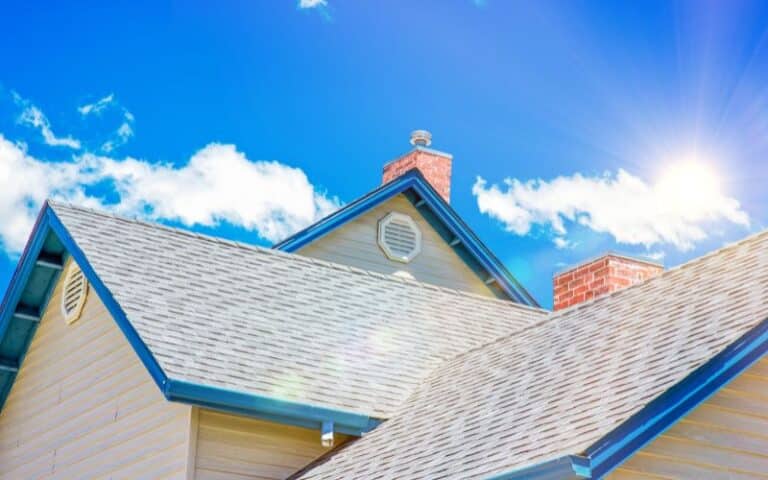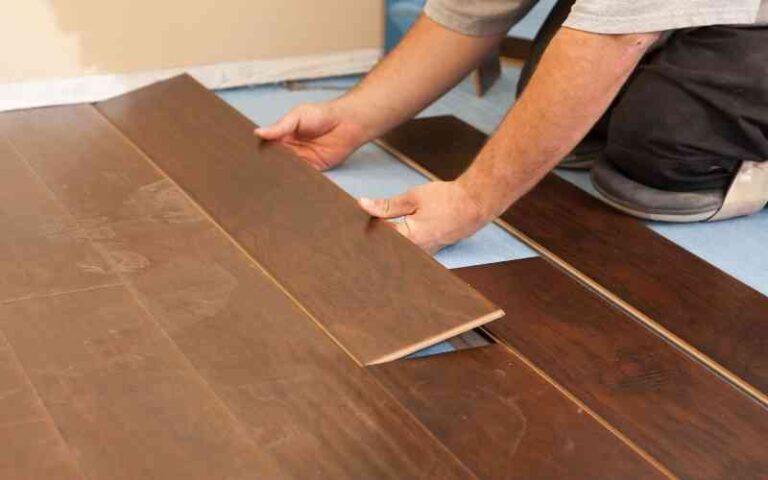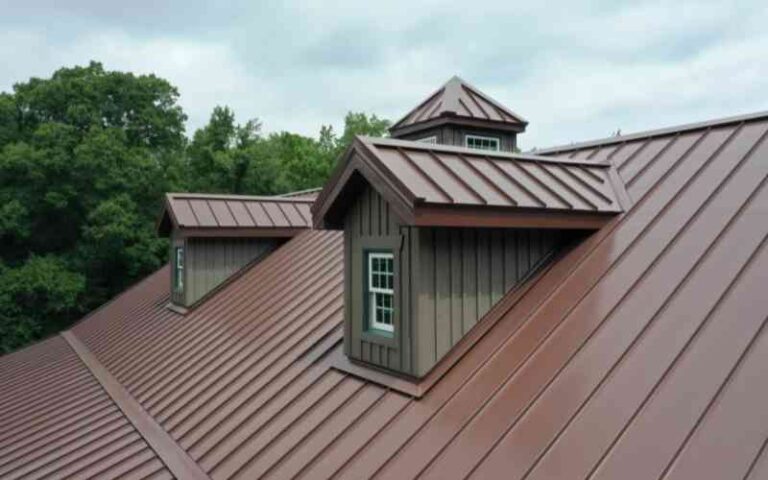Tar is a unique material for coating roofs because of its waterproofing properties.
There are many other reasons you would want to paint a roof even after applying roof tar, one of which is to give a more aesthetic look to your building. You can improve this aesthetic look further by painting the tar coat.
Paint will cover roof tar if you use high-quality paint on a well-applied surface. Employing a professional who knows how to paint roof tar is important. The equipment and methods you use can also make painting a roof possible, so I recommend consulting a professional to help you on this project.
Ready for a Roofing Quiz?
Can You Paint Over Roof Tar?

Yes, you can paint over roof tar. But you must prepare the surface well since tar forms a hard, raised, and uneven surface.
You can paint over roof tar if you choose the right paint and employ a professional roof painter. Painting a roof is also based on roof pitch and the area’s Temperature.
Painting a roof should not be a DIY project; you can put yourself in danger when you climb the roof, or even if you succeed, the probabilities are there won’t be a good finish.
A professional roof painter can make painting easier and bring a more appealing aesthetic.
Although it will cost you a couple of bucks, it is better if you consult a professional roof painting company.
Buy the best paint for roof projects. These paints come in various colors and will stick to tar and stay on it for years.
You can choose from several paints: acrylic paint, coal tar paint, oil-based paint, and water latex paint.
Tar is sensitive to temperature. A low temperature will make paint hard to paint on tar, and a high temperature will make the tar turn liquid.
Advantages of using paint to cover roof
Painting over roof tar has several advantages. Below are a few advantages that will make you give painting your roof tar more consideration.
#1. Better appearance
Tar on roofs is sometimes very rough and unpresentable, especially when heated by the sun and as the color of the tar is black (except the latest types of roof tar that come with lighter colors).
Painting it gives it an appealing appearance. Painting gives us many colors to choose from compared to roof tar. You can retain the color of your roof if you wish.
#2. Prolonged life expectancy
Painting over roof tar reinforces the roof’s surface, enabling it to last longer than before.
Not only is it an added water-resistance material, but it can prevent mold and mildew (fungal) damage, thereby preventing roof leakage.
#3. Keep the building cooler.
Painting a roof with a reflective color like white will make the room cooler and reduce the cost of keeping the building cool or ventilated, especially in hot seasons and regions.
#4. Waterproof
Roof tar is water resistant, as does paint too, and adding paint to a roof tar reinforces the water resistance and prolongs its lifespan.
#5. Energy
The reflective power of paint reduces the energy consumption of the building. The value of a building increases with its energy star rating.
Because people love to buy or rent buildings with high energy ratings, it would be an added that the value of a building increases with its energy star rating.
Because of these advantages, many people are opting for this method. Below is a graph that shows an estimation and projection of the use of roof paint in the coming years.
Figure 1: Estimating the global roof paint market from 2020-2028.
What to Use to Cover Roof Tar?
Paints are the best options to cover roof tar because of their many benefits. Paint provides several color options, one of the major reasons other options have not been considered.
However, new tar products come in other colors like white that do not require you to paint them.
#1. What Paint Will Stick on a Roof Tar?
Coal tar, acrylic, oil, and water-based latex paint can be used. Tar is a petroleum-based product, and its chemical composition makes it hard for paint (some paints, to be specific) to cling to it.
Knowing the paint on roof tar will save you stress and prevent wasting time and materials.
The right paint will not peel off when it rains and will retain its aesthetic value on the materials. Let’s go over a few options.
#2. Coal Tar Paint
Coal tar is a black seal material commonly used as paint. It contains some hazardous components like caustic, mixed with other polymers to make it tough and more durable.
This mixture of polymer substances makes it capable of resisting the sun’s UV (ultra-violet) rays and the erosive activities of the precipitating rain.
It is important to note that it is made up of toxic chemicals called Polycyclic-aromatic hydrocarbons (PAHs) and, if handled incorrectly, can affect both man and animals around them.
Therefore when working with coal tar paint, make sure you put on the necessary protection like gloves, goggles, and protective clothes.
#3. Acrylic Paint
Acrylic paint is the best paint to use when considering painting a roof tar. It is made up of water-soluble material and polymer that prevents the line from lifting off tar due to its flexibility.
The paint comes in different colors, which gives the user plenty of options to choose from, unlike coal tar paint.
#4. Oil-Based Paint
Oil paint is unlike acrylic paint as it is oil-based and comes in different colors. This slow-drying paint contains particles of pigment suspended in drying oil.
The paint is water resistant when applied to roof tar but is not easily susceptible to cracks because of its special oily texture.
#5. Water-Based Latex Paint
This paint is the fastest drying paint to use on a roof tar( three hours minimum), and it is only allowed to be used on a roof if another paint is already applied to the roof, e.g., coal tar paint.
It is made up of pigments with water as its carrying agent. Compared to other paints, water-based paint can retain its color over a longer time and resist much moisture.
How to Paint Over a Tar Wall?
Painting a tar wall doesn’t require any exceptional skill except painting skills so that you can paint a tar wall yourself.
You are going to need the materials below.
- Razor blade scraper
- Abrasive sponge
- Kerosene or any other cleaning solution
- Stain blocking primer
- Paint brush or roller
- Paint
Below are steps you can follow to paint it.
#1. Step one:
Scrap tar if possible. When scraping, be mindful of the surface to keep it as flat as possible.
#2. Step two:
Deep abrasive sponge on kerosene or any quality cleaning solution, clean the tar from the wall. While cleaning, use an absorbent cloth to wipe it off immediately, giving it no time to dry.
#3. Step three:
Fill the wall with cement or any filler if there is any damage to the wall. When it is dry, apply primer on the wall until you can see no tar stain. Follow the primers manufacturers’ directives closely.
#4. Step four:
Apply the desired paint with a roller or a paintbrush. Painting from one roof shingle to the other.
Final thoughts
Painting a roof has several benefits, from adding aesthetic value, increasing the roof’s lifespan, and reducing energy consumption.
Painting can cost a lot of money, but it depends on the roof’s size, the roof, the pitch of the roof’s repairs, and the contractor handling the project.
But no matter how much it might cost, always consider using quality paints and professional contractors.






